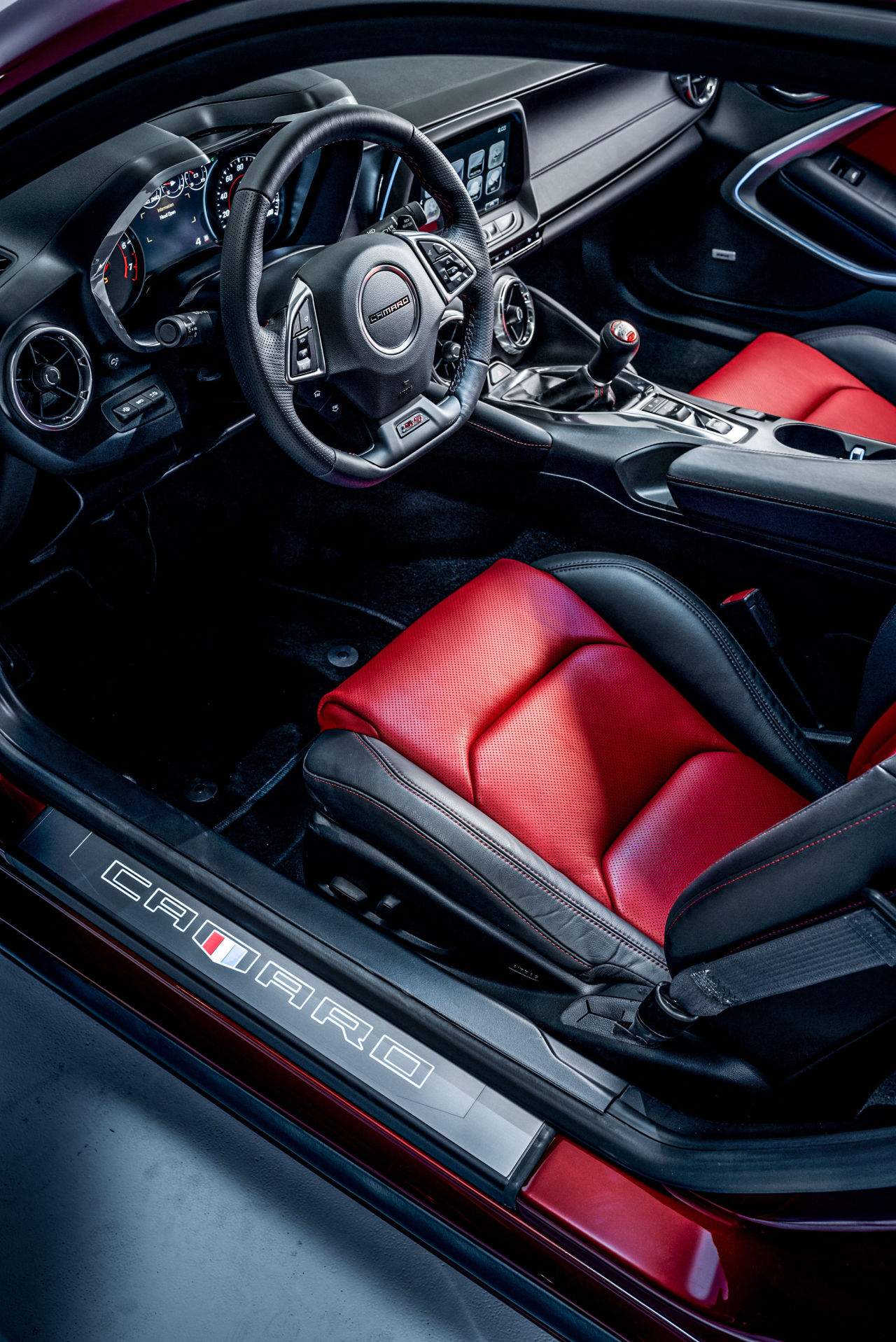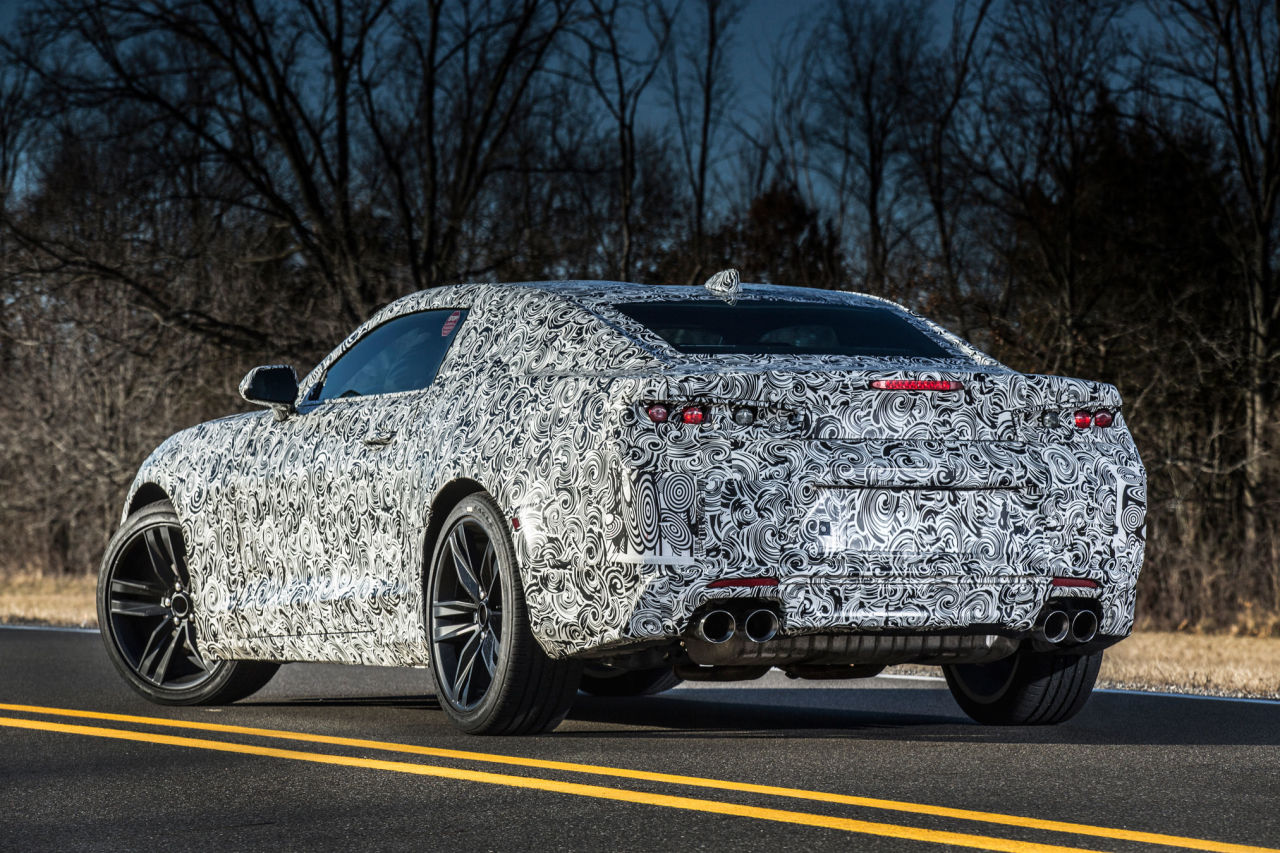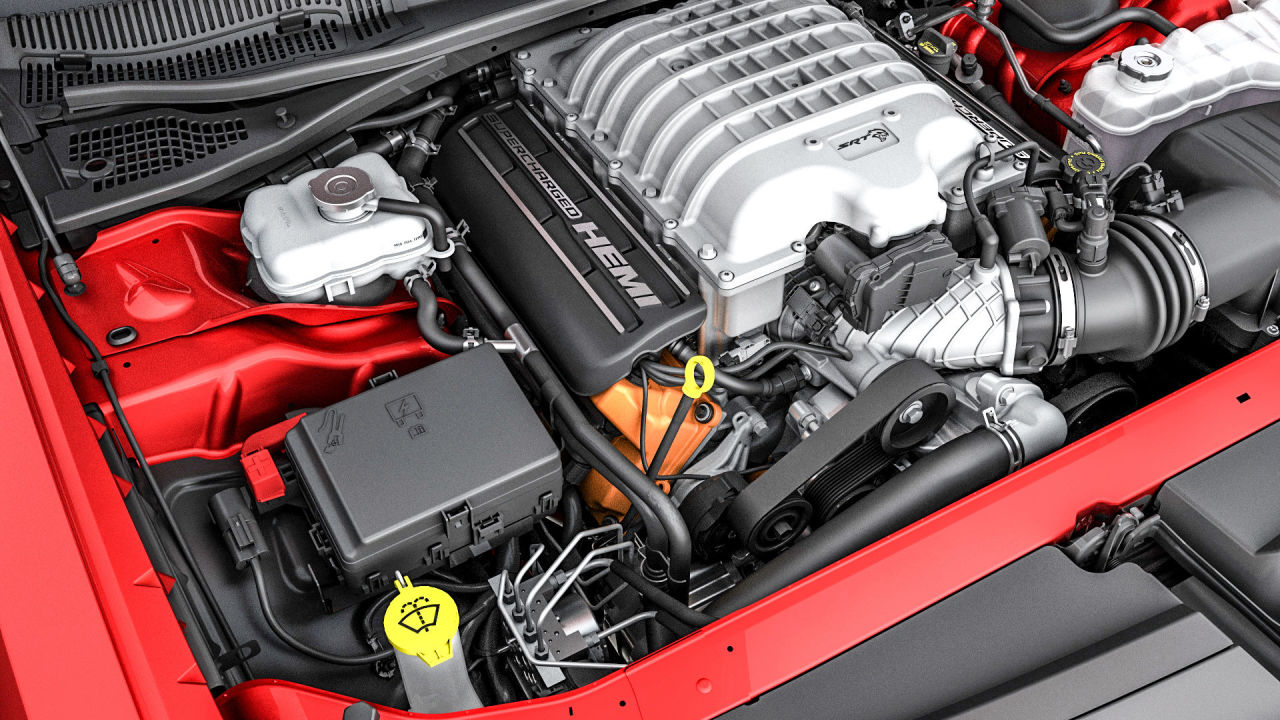Weight: 3,400 to 3,600 pounds
Engines: (horsepower not finalized): 2.0-liter turbo four-cylinder, 270 hp; 3.6-liter V-6, 330 hp; 6.2-liter V-8, 440 hp
Transmissions: Six-speed manual or eight-speed automatic
The Camaro has a big red button mounted to the top of the dash, an ominous mushroom that looks like it could start World War III. In fact, its purpose is to stop an out-of-control prototype. This is a 2016 Camaro, the all-new sixth generation, and it's not quite done yet—it's still in the oven, to the point that it needs a kill switch just in case the throttle software goes glitchy and sends you on an involuntary top-speed run. The car is also covered in camouflage, a precaution in case I sneakily remove the stickers that General Motors' security taped over my iPhone's cameras when I arrived at the car-maker's Milford Proving Ground. And oh, there is so much that I want to photograph. Is that a Cadillac CT6? Why is there a BMW i8 driving around? Focus, man.
The new Camaro doesn't look radically different from the 2015 model, but it's lighter, smaller, and more powerful than its predecessor. GM says the standard-issue SS—the first rung on the V-8 Camaro hierarchy—will beat the outgoing 1LE track rat on a road course, and even the base four-cylinder will nail zero to sixty in the fives. But I'm not at Milford to do laps on the Lutz Ring track or rip burnouts on the Black Lake, GM's huge handling and dynamics pad. I'm here to drive a V-6 Camaro around the ride-and-handling loop, a stretch of road devised to torment suspension systems and the chassis engineers who tune them. Frost heaves, midcorner stutter bumps, large-amplitude rollers—the worst real-world surfaces are all represented. This is where GM decides to debut a Camaro? That's an interesting story in itself.
Roy Ritchie
We already knew GM could build -Camaros with race-car handling (Z/28) and ruthless drag-strip horsepower (ZL1). But over-the-road grace was never part of the deal. You didn't buy a Camaro because you expected it to smother an expansion joint the way a Cadillac could. Well, the new one might actually feel Caddy-like, given that it shares its Alpha platform with the ATS. The lightweight Alpha helps the Camaro lose as much as 300 pounds in V-6 cars and 200 in V-8s, which goes a long way toward addressing a major problem with the prior model: It was a zaftig chunk of car. Now, according to GM, we'll have the V-6 cars packing 330 horsepower and weighing in at around 3,400 pounds.
Before I get in the 2016, I drive a 2015 model around the loop to get a baseline on the existing Camaro's talents. And actually, the old porker still drives quite well—unlike the previous Ford Mustang, the Camaro had all-independent suspension the last time around. Nonetheless, when I hit a sixty-mile-per-hour dip, the impact causes my skull to bounce off the headliner on the rebound. Mass outmatches the suspension.
I climb into the disguised 2016 and head for the dip, wincing in anticipation as I hold the speedometer at sixty. The impact arrives, I'm compressed in my seat, and then the car goes momentarily light and simply continues on down the road. My head does not bounce off the roof. When we hit the stutter bumps, there's some chatter through the steering wheel but the Camaro holds its line. There's still tuning to do, as signified by the big red panic button, but the initial impression is that the new chassis invokes a word that was never in the Camaro vocabulary: refinement.
However, GM didn't polish the personality out of the thing. Both V-8s and V-6s get optional active exhaust, and the owner can program the aggressiveness of the muffler bypass—from "stealth" to "constantly irritate the neighbors." The LED interior lighting has a demo mode that prompts the lights to change color in sequence around the cabin, a feature that is as awesome as it is totally unnecessary. And the roof has such a pronounced double-bubble design that cars with sunroofs will require a completely different flat roof panel. It would've been easier to just give all the cars flat roofs, but that wouldn't have looked as killer.
The new Camaro arrives late this year. And when it does, I'll have some unfinished business to attend to. The ride-and-handling loop was all very impressive, the new technology suitably sophisticated. But I can't wait to gun the V-8, drop the clutch, and welcome the sixth generation with a big, roaring burnout.
The petition: Let engines look like engines
My first car was a 1985 Camaro. And not just any Camaro—an IROC-Z with the mighty TPI V-8 under the hood. TPI stood for Tuned Port Injection, and atop the engine block sat a gorgeous bundle of intake runners, one for each cylinder, looking like an aluminum arachnid caught feasting on its prey. These days popping the hood usually doesn't do much for you, because nearly every carmaker hides the engine beneath a big plastic cover. Ostensibly this is to quell noise, but really it's because it's easier to style a piece of plastic than it is to sweat the details. The plastic engine cover is a cop-out. Show us what you've got. Be real. If anyone needs an example, raise the hood on a Hellcat engine: all supercharger, no subterfuge.




Комментариев нет:
Отправить комментарий